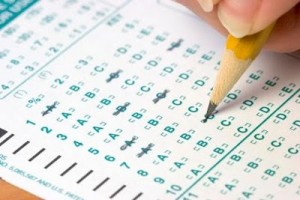Pencil Me In
 My son took the PSAT yesterday, the first of several rites of passage from high school to college that will be determined by a #2 pencil. Just what is the significance of the #2 pencil you might ask? Well, you are in luck. Here’s the Reader’s Digest version. Pencils have been around since the discovery of a large graphite deposit in England in the 1500s. The substance was easily sawed into sticks and wrapped in string to be used as a writing instrument. Later, pieces of graphite were inserted into hollowed out wooden sticks, the precursor to the modern pencil. Back in day, graphite was thought to be a form of lead and called plumbago, Latin for “lead ore.” Graphite is in fact a form of carbon and does not contain the metal lead element, yet we still call the core of a pencil “lead.”
My son took the PSAT yesterday, the first of several rites of passage from high school to college that will be determined by a #2 pencil. Just what is the significance of the #2 pencil you might ask? Well, you are in luck. Here’s the Reader’s Digest version. Pencils have been around since the discovery of a large graphite deposit in England in the 1500s. The substance was easily sawed into sticks and wrapped in string to be used as a writing instrument. Later, pieces of graphite were inserted into hollowed out wooden sticks, the precursor to the modern pencil. Back in day, graphite was thought to be a form of lead and called plumbago, Latin for “lead ore.” Graphite is in fact a form of carbon and does not contain the metal lead element, yet we still call the core of a pencil “lead.”
Pencils are graded based on the qualities of the graphite core. The European scale uses the term HB for classifying the pencil; H stands for the Hardness of the graphite and B represents the Blackness level. An HB pencil falls in the center of the spectrum. A 9H pencil would have the hardest graphite core but would produce the lightest mark. The 9B pencil at the opposite end produces the darkest imprint yet smudges easily.
In the 19th century, Americans devised a practical numbered system of pencil grading. A #1 pencil is the equivalent of a B instrument, just slightly darker than the median HB, which was given the now-well-known designation of #2. School testing systems often require the #2 pencil because it produces the optimal opacity of a mark that can be read by the omnipresent Scantron machines. A pencil with harder lead would make too light a mark. A darker pencil might smudge and confound the Scantron system.
The Pencil Parable
While I was pondering the marvel that is the pencil, someone happened to send me an email with a Pencil Parable. It went something like this:
A pencil maker told the pencil 5 important lessons before putting it in the box and sending it out into the world:
- What is important is what is inside of you.
- Everything you do will always leave a mark.
- You can always correct the mistakes you make.
- To be the best pencil, you must allow yourself to be held and guided by the hand that holds you.
- In life, you will undergo painful sharpenings, which will only make you better.
The moral of this little tale? The most important part of who you are is what is inside of you. Everything you do will have an impact on someone or something, even if you don’t see it, so choose your words and actions carefully. You might make mistakes in life, but know that it’s not too late to fix them. Don’t be afraid or too proud to ask for help and guidance. And finally, similar to my favorite quote by Friedrich Nietzsche, “That which does not kill us makes us stronger.”
So the next time you pick up a pencil, perhaps you’ll remember the positive aspects of a pencil that are in all of us. I know I will. Of course, I would never think of you as #2…
As for my son, he needs to stay sharp. The SAT is just around the corner.